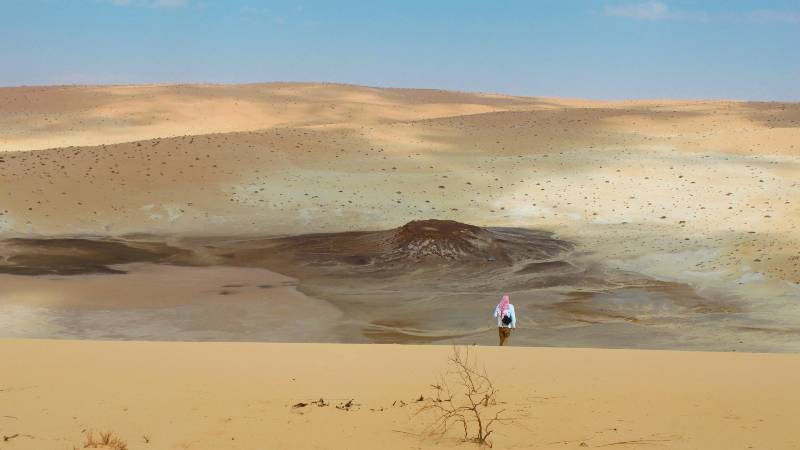Earliest evidence of humans in Arabia uncovered - with climate change driving migration

An international research team has found that repeated pulses of monsoon rains over the past 400,000 years created green corridors in Arabian desert landscapes, forming key migration routes for early humans.
During fieldwork, researchers discovered the oldest dated evidence for humans in Arabia, uncovering archaeological sites which showed that in each ‘Green Arabia’ phase, when increased rainfall created grasslands, humans travelled into and through the region.
Revealing links between human evolution and climate change
Dr Ash Parton, Senior Lecturer in Physical and Environmental Geography at Oxford Brookes University, was part of the international research team and helped to identify, map and reconstruct the historic sites of interest in the Nefud Desert area of north-central Saudi Arabia.
Now an arid area of 40,000 square miles, the research showed that the Nefud Desert was once home to rolling grasslands, rivers and large lakes which formed in the deep hollows between sand dunes. It periodically transformed from one of the most uninhabitable parts of Southwest Asia into a lush landscape that supported wild donkeys, antelopes and hippos.
“Through extensive field work and palaeoenvironmental analyses conducted in our dedicated labs at Oxford Brookes, we were able to reconstruct climatic and landscape changes across the region over the past 400,000 years,” he said. “This helped us to determine phases of freshwater lake formation and increased biodiversity, which were then linked to periods of human occupation.
“These findings provide important information regarding the relationship between human evolution and long term climate change.”
Oldest dated evidence for humans in Arabia
To date, research in the region has focused on coastal and peripheral areas - while human prehistory in the vast desert interior areas was poorly understood. But the discovery of thousands of stone tools by the research team, some dated to 400,000 years ago, provided the oldest dated evidence for humans in Arabia.
Whilst the tools revealed changes in human culture over time and where people were arriving from, their preservation within ancient lake sediments indicated that human occupations in the area occurred when rainfall was known to have increased.
The findings are described as a “breakthrough in Arabian archaeology” by Dr Huw Groucutt, lead author of the study from the Max Planck Institute for the Science of Human History.
“Arabia has long been seen as an empty place throughout the past,” he said. “Our work shows that we still know so little about human evolution in vast areas of the world and highlights the fact that many surprises are still out there.”
The research is a collaboration between scientists at the Max Planck Institute for the Science of Human History in Germany, the Heritage Commission of the Saudi Ministry of Culture and other international researchers including Dr Parton.
The research paper Multiple hominin dispersals into Southwest Asia over the last 400,000 years was published in Nature. You can also read more about the findings in an article by some of the research team in The Conversation.
Main image: Archaeologists survey the Nefud Desert of northern Saudi Arabia, where numerous ancient lake between the dunes supported ancient humans and herds of animals. Eleanor Scerri
